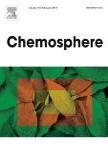版权所有:内蒙古大学图书馆 技术提供:维普资讯• 智图
内蒙古自治区呼和浩特市赛罕区大学西街235号 邮编: 010021

作者机构:Department of Chemistry and Centre of Advanced Studies in Chemistry Panjab University Chandigarh160014 India Najran University Najran11001 Saudi Arabia Department of Materials Science and Engineering The Ohio State University ColumbusOH43210 United States
出 版 物:《Chemosphere》 (Chemosphere)
年 卷 期:2024年第357卷
页 面:141935页
核心收录:
学科分类:0710[理学-生物学] 0830[工学-环境科学与工程(可授工学、理学、农学学位)] 070207[理学-光学] 1001[医学-基础医学(可授医学、理学学位)] 0817[工学-化学工程与技术] 08[工学] 100102[医学-免疫学] 0805[工学-材料科学与工程(可授工学、理学学位)] 0703[理学-化学] 0702[理学-物理学]
主 题:Physicochemical properties
摘 要:The conversion of waste biomass into a value-added carbonaceous nanomaterial highlights the appealing power of biomass valorization. The advantages of using sustainable and cheap biomass precursors exhibit the tremendous opportunity for boosting energy production and their application in environmental remediation processes. This review emphasis the development and production of carbon-based nanomaterials derived from biomass, which possess favourable characteristics such as biocompatibility and photoluminescence. The advantages and limitations of various nanomaterials synthesised from different precursors were also discussed with insights into their physicochemical properties. The surface morphology of the porous nanomaterials is also explored along with their characteristic properties like regenerative nature, non-toxicity, ecofriendly nature, unique surface area, etc. The incorporation of various functional groups confers superiority of these materials, resulting in unique and advanced functional properties. Further, the use of these biomass derived nanomaterials was also explored in different applications like adsorption, photocatalysis and sensing of hazardous pollutants, etc. The challenges and outcomes obtained from different carbon-based nanomaterials are briefly outlined and discussed in this review. © 2024 Elsevier Ltd